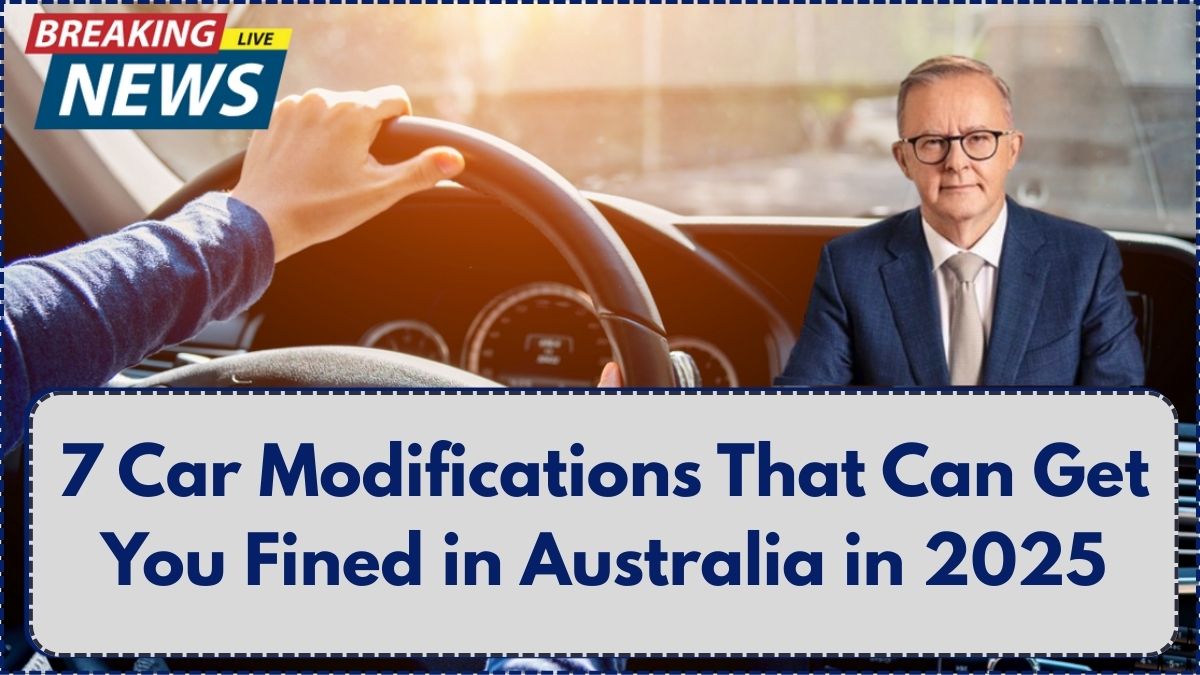1. Excessive Window Tinting
While some level of tinting is allowed, going too dark is a common offence. Each state sets limits on Visible Light Transmission (VLT). In general, the minimum allowed for front side windows is 35% VLT.
Too-dark tints:
-
Reduce visibility, especially at night
-
Interfere with law enforcement visibility into the vehicle
-
Are illegal if applied to windshields (except in designated sun strips)
Tip: Get tinting done by certified professionals who know the legal limits in your state.
2. Non-Compliant Exhaust Systems
Upgrading your exhaust for sound or performance can land you in hot water. New regulations under the National Stationary Exhaust Noise Test Procedure limit the decibel levels your car can emit.
Illegal exhaust mods:
-
Exceed 90dB (depending on the car’s age)
-
Bypass emission control systems (e.g., removing catalytic converters)
-
Produce “popping” or “crackling” sounds
These violate environmental and noise pollution laws, especially in urban zones.
3. Suspension Modifications That Go Too Far
Suspension mods are popular among off-roaders and lowrider fans alike, but extreme alterations can lead to instability, steering issues, or braking problems.
Examples of illegal mods:
-
Raising/lowering more than 50mm without certification
-
Air suspension that alters ride height while in motion
-
Modifications that affect alignment or wheel track
To stay legal, all suspension modifications must be certified by a licensed engineer and meet your state’s compliance guidelines.
4. Neon Underglow or Decorative Lighting
While they might look cool, underbody neon lights are largely banned in Australia when the vehicle is on public roads. These lights can:
Most states allow neon lights only when the car is parked at shows or private events.
5. Unauthorised Engine Swaps
If you’re thinking of replacing your car’s engine with a more powerful one, it’s not as simple as a direct swap. Engine changes must comply with emission standards and safety certifications.
Uncertified engine swaps can:
Always consult an approved vehicle engineer before proceeding with a swap.
6. Oversized or Unapproved Tyres
Many enthusiasts install larger wheels and tyres for a sportier look. However, there’s a legal limit to how much you can increase size without affecting safety.
Illegal tyre mods:
-
Exceeding size by more than 50mm (diameter or width)
-
Using tyres without proper load or speed rating
-
Allowing tyre tread to stick out beyond fenders
Incorrect tyres can throw off your speedometer, increase stopping distances, and compromise grip.
7. Altered Number Plate Visibility
Modified or novelty number plates—such as reflective covers, altered fonts, or tinted covers—can make it difficult for traffic cameras and police to identify your vehicle.
These violations often result in on-the-spot fines, and repeated offences can escalate to licence demerits.
FAQs
Q1: Can I get fined even if I pass a vehicle inspection with illegal mods?
Yes. Passing inspection doesn’t always mean your mods are legal. Roadside checks may still deem your car unroadworthy if it doesn’t meet real-world compliance.
Q2: Are LED light bars illegal?
Not always. They’re legal if mounted and wired correctly, and only used in off-road or rural conditions—not in urban areas or on public roads.
Q3: How can I know if my mod is legal?
Refer to your state’s vehicle standards guidelines or consult a certified automotive engineer.
Q4: Do these rules apply to motorcycles?
Yes, many similar restrictions apply to motorcycles—especially around exhaust noise and lighting.
Q5: Is there a national database of legal car mods?
Each state has its own compliance guide. However, federal ADR standards apply across the board for most critical components.

